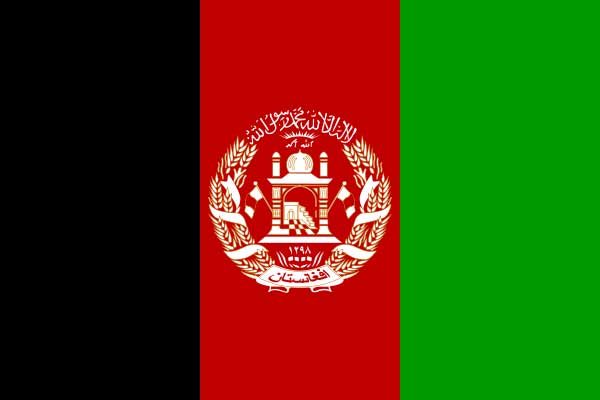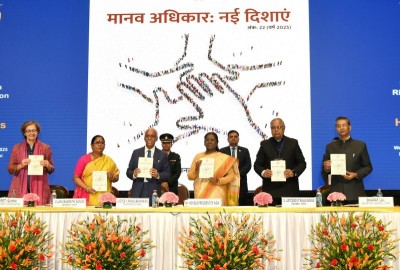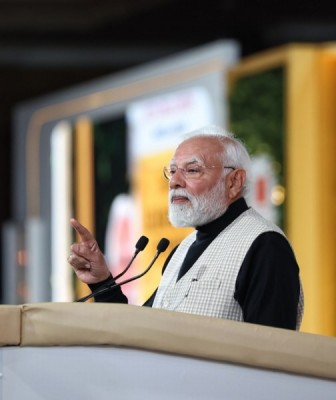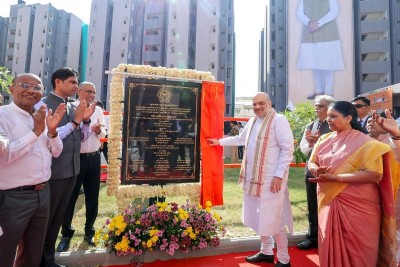
Reeling under Foreign-backed Terror
Earlier the same day, a suicide bomber killed at least 13 persons, including an anti-Taliban local militia commander identified as Malik Khan Jan, outside the Governor's compound in Asadabad, the provincial capital of Kunar. Provincial Governor Wahidullah Kalimzai said, "Most of the victims were civilians and children who were either passing by or playing in the park." At least 40 people were injured in the attack.
On February 21, 2016, at least 14 people, including nine civilians, were killed and another 19, including 17 civilians, were injured in a suicide bombing in a crowded market in the Sia Gerd District of Parwan Province.
According to partial data compiled by the South Asia Terrorism Portal (SATP) at least 140 civilians have already been killed in Afghanistan since the beginning of the current year (data till March 4, 2016).
The United Nations Assistance Mission in Afghanistan (UNAMA) which began systematically documenting civilian casualties on January 1, 2009, has recorded 58,736 civilian casualties (21,323 dead and 37,413 injured) up to December 31, 2015. Through 2015, UNAMA recorded 11,002 civilian casualties (3,545 civilians dead and 7,457 injured) as against 10,534 (3,701 civilians dead and 6,833 injured) in 2014. More disturbingly, women and children constitute a rising proportion of the victims of this violence. While overall civilian casualties increased by four per cent in 2015 in comparison to the previous year, casualties among women increased by 37 per cent (1,246 women casualties, including 333 dead and 913 injured) and by 14 per cent among children (2,829, including 733 dead and 2,096 injured).
Moreover, the battle between the Security Forces (SFs) and the Taliban to establish effective control over areas across Afghanistan further intensified through 2015. According to a December 2015 United States (US) Department of Defense (DoD) report "from January 1 through November 15, 2015, there was a 27 percent increase in ANDSF [Afghan National Defense Security Force] casualties compared to the same period last year [2014]". The repot did not provide specific numbers. However, aWashington Times report on December 27, 2015, claimed that "as of last month (November 2015), about 7,000 members of the Afghan Security Forces had been killed this year [2015], with 12,000 injured, a 26 percent increase over the total number of dead and wounded in all of 2014".
On the other hand, fatalities among the NATO Forces continued to decline - 27 fatalities in 2015 as against 75 in 2014. A total of 3,515 NATO Forces, including 2,381 US troops have been killed so far since 2001. The increase in fatalities among ANDSF, on the one hand, and simultaneous decline in NATO fatalities, on the other, is primarily because NATO Forces have ceased operating as combat Forces (barring few specific operations) since the beginning of 2015, and ANDSF has taken the pole position in fighting the insurgents. ANDSF includes the Afghan Army, Afghan Air Force, and Afghan National Police. The Afghan Local Police (ALP) also helps. Explaining the reason behind rising losses among the ANDSF and ALP, Afghan Interior Minister Nur al-haq Ulumi stated in May 2015, "Our National Police and the Afghan Local Police are the first line of defense. They are always fighting the insurgents. That's why we have so many casualties."
Though there is no specific data on number of militants killed in Afghanistan, according to partial data compiled by the SATP, 10,628 militants were killed through 2015 as against 6,030 such fatalities in 2014. Most of the militants killed belonged to Taliban.
Evidently, Afghanistan is in the midst of an increasing bloody war. Despite losing large numbers of their cadres, the Taliban is surging. According to the December 2015 DoD report, "with control of - or a significant presence in - roughly 30 percent of districts across the nation, the Taliban now holds more territory than in any year since 2001, when the puritanical Islamists were ousted from power after the 9/11 attacks". The Taliban have proven capable of taking rural areas and contesting key terrain in areas such as Helmand, while continuing to conduct high-profile attacks (HPA) in Kabul, the report added. From January 1 to November 16, 2015, there were 28 HPAs in Kabul, a 27 percent increase compared to the same time period in 2014. On January 4, 2016, summing up the security scenario, Zamir Kabulov, the Russian President's special envoy for Afghanistan, stated that Afghanistan remains tense, with "high or extraordinary" security threats present in 27 of 34 Afghan provinces.
At this juncture an attempt is being made to bring Taliban to talks table. The fourth meeting of the Quadrilateral Coordination Group (QCG, comprising Afghanistan, Pakistan, the US and China) on the Afghan Peace and Reconciliation process was held in Kabul on February 23, 2016. QCG member states invited all Taliban and other groups to participate, through their authorized representatives, in direct peace talks with the Afghan Government, which were expected to take place in the first week of March 2016 in Islamabad. Even before the specific dates were finalized, however, the Taliban declared that they would not participate in international peace talks, citing what they claimed were increased US air strikes and the Afghan Government's military operations.
Media reports indicate that Afghan and Pakistani Government officials remain hopeful that the talks would continue, despite the Taliban statement. "This is just public bargaining on the part of the Taliban. They did it last time, too. They put out a statement of denial, and then they showed up to talks," an unnamed official, close to President Ashraf Ghani, argued on March 5, 2016.
The first round of official peace talks between the Afghan Taliban and the Afghan Government had taken place in the intervening night of July 7 and July 8, 2015, in Murree in Pakistan, with an agreement to meet again on August 15 and 16, 2015, in the Qatar capital, Doha. Before, the second round of talks could take place, the Afghan Government disclosed, on July 29, 2015, "The government ... based on credible information, confirms that Mullah Mohammad Omar, leader of the Taliban, died in April 2013 in Pakistan." Subsequent disclosures indicated that Omar died while he was under treatment in Karachi.
The Taliban soon split into two factions - one led by Pakistan's nominee, Mullah Akhtar Mansoor and another by Mullah Mohammad Rasool. The next round of talks failed to materialize. Reports now suggest the possibilities of rapprochement between the two factions. Abdul Rauf, a Taliban 'commander' close to Rasool, said senior Taliban figures who had objected to the rapid and secretive succession are now reluctantly returning to the fold: "We all took a stand against Mullah Akhtar Mansoor, but now one by one we are joining with him without demanding any changes." While both Islamabad and Mullah Mansoor lost tremendous credibility among the Taliban for their conspiracy to suppress the truth of Mullah Omar's death, and to manipulate his persona for the past years, the tremendous support the terrorists receive from Pakistan remains critical to the survival of their movement, and a forced reconciliation appears inevitable.
In the meantime, in an attempt to represent itself as the most effective player in the peace process, Pakistan willingly or unwillingly made an admission which confirmed its destabilizing role in Afghanistan, for which it had long been held responsible and about which SAIR has written consistently. Sartaj Aziz, Foreign Affairs Advisor to the Pakistani Prime Minister Nawaz Sharif, admitted on March 2, 2016, "We have some influence on them [the Taliban] because their leadership is in Pakistan and they get some medical facilities, their families are here. So we can use those levers to pressurize them to say: 'Come to the table'."
Pakistan's enduring game plan remains committed to the installation of a Government in Afghanistan in which Taliban elements have an important, if not dominant, role. Islamabad believes such a Government would help its larger strategic and economic interests and, in the process, would obliterate Indian interests in Afghanistan.Increasing attacks on Indian consulates across Afghanistan in recent times are part of this wider powerplay. In the latest of the series of such attacks, on March 2, 2016, six terrorists carried out a suicide attack targeting the Indian Consulate in Jalalabad, the provincial capital of Nangarhar Province. Two Afghan civilians and an Afghan Policeman were killed in the attack. While two terrorists blew themselves up near the consulate building initiating the attack, the remaining four were killed in the subsequent gun battle. Though no group has claimed responsibly for the attack so far, the role of the Pakistani establishment has been established in such attacks in the past. Soon after the Jalalabad attack, former Afghan President Hamid Karzai, stated, "Each of those (previous) attacks has originated from across the border, from neighbouring Pakistan. That's where the origin of this trouble is..."
While the Taliban has regained significant lost ground, it has now entered into afratricidal turf war with its own splinters now cleaving to the flag of the Islamic State (IS, aka Daesh). The December 2015 DoD report notes, "IS-KP [Khorasan Province] has progressed from its initial exploratory phase to a point where they are openly fighting the Taliban for the establishment of a safe haven, and are becoming more operationally active. IS-KP has successfully seized pockets of terrain from the Taliban in Nangarhar Province. The group continues to recruit disaffected Taliban and formerly Taliban-aligned fighters, most notably the Islamic Movement of Uzbekistan, which publically declared allegiance to IS-KP in August 2015." The coalition officials estimate that around 1,000 to 3,000 IS fighters are trying to establish a base of operations in the rugged mountains of Nangarhar Province.
Reeling under the terror exported from across its Southern borders, Afghanistan now has 315,764 ANDSF personnel in position (against an authorized strength of 352,000). 28,000 ALP personnel are also in position, as against the sanctioned strength of 30,000. Despite having performed reasonably well, the Forces need dramatic augmentation to contain and reverse the surge in militant activities across Afghanistan. US Army General Lloyd J. Austin III observed, on March 2, 2016, "This fighting season was the first where [Afghan Forces] were in the lead and responsible for the security of the country. And they faced a determined enemy that continues to attempt everything in its power to cause the Afghan security forces to fail. But they haven't failed. They are holding their own. Afghanistan's special operations forces are becoming the best in the region. And the Afghan air force is enabling those ground elements."
Nevertheless, Afghan Forces are reeling under circumstances created by thewithdrawal of an overwhelming proportion of NATO Forces, though the small remaining contingents continue to provide active support. As of December 2015, there were 12,905 NATO Forces from 42 contributing nations, including 6,800 US Forces stationed in Afghanistan. The US, which had earlier said that it would reduce its presence to a maximum of 1,000 personnel in Afghanistan by the end of 2016, to provide security for the US Embassy in Kabul, has already changed its plans, recognizing the increasing threat. On October 15, 2015, US President Barack Obama stated that he would keep 5,500 US troops in Afghanistan into 2017, arguing "Afghan Forces are still not as strong as they need to be... Meanwhile, the Taliban has made gains, particularly in rural areas, and can still launch deadly attacks in cities, including Kabul."
It is expected that the US will make some further adjustments in its plans for deployment of troops in Afghanistan. Gen. John F. Campbell, who handed over command of the Resolute Support Mission in Afghanistan to Gen. John W. Nicholson Jr. on March 2, 2016, stated on February 17, 2016, "I think we have to look at conditions on the ground. I think when the decision was made for 5,500, there were some assumptions that were made and some of those may not have come true. I think there are some adjustments we have to make on that number, and I've provided those to my senior leadership, and hopefully we'll make some changes there. I'm also going to make sure [successor Gen. Nicholson] has that, and he'll come in and make his own assessment."
Unless the Taliban is defeated militarily, and the spread of IS is contained, no stability can be brought into Afghanistan. At a time when the Taliban is rampaging across the country, the talks process can only confer legitimacy on the extremists and cede undue leverage to the external forces that have long been guilty of aiding and abetting terrorism. It is now critical time to bring to account the powers - both state and non-state - that have been responsible for the enduring suffering of the people of Afghanistan.
Support Our Journalism
We cannot do without you.. your contribution supports unbiased journalism
IBNS is not driven by any ism- not wokeism, not racism, not skewed secularism, not hyper right-wing or left liberal ideals, nor by any hardline religious beliefs or hyper nationalism. We want to serve you good old objective news, as they are. We do not judge or preach. We let people decide for themselves. We only try to present factual and well-sourced news.







